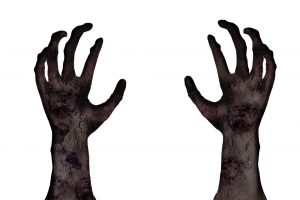
Throughout history, many people have used birds to think about and predict the future. In Wales, the call of an early-arriving cuckoo in the spring predicts a good crop of hay later in the year.
In the South American Andes, seeing a yellow-headed vulture means good luck, while spotting a black one is bad luck. In southern Africa, in Kalahari, hunters watch the black-faced babblers after an antelope hunt to indicate where their wounded prey may be.
Of all the ecological knowledge that people around the world use in their everyday lives, an awareness of birds and their behavior is present worldwide.
Some researchers explored this phenomenon, comparing reports from the six continents. They have found that people from diverse communities pay more attention to particular birds and what they reveal about the world around us, from approaching weather to illness, mortality and the supernatural.
For this research, there were analyzed 500 accounts, in 123 languages, based on information on how birds can predict the future.
The oldest representation of a bird is in Chauvet cave, France. There’s a 30,000-year-old owl drawn with fingers on a soft wall. Owls are among the most commonly mentioned birds as signs and foreboding, most of the time being related to death, ghosts and fear, but occasionally, owls can mean something positive, like the beginning of summer.
Also, people were found to commonly looking to crows, cuckoos, woodpeckers, herons, eagles, nightjars and chickens for signs – but there are many other species that play a similar role.
The majority of the birds were heard because they related to birds’ calls or songs. To be more specific, in Ayoreo communities in northern Paraguay, the calls of the plovers and lapwings indicate the drying of the landscape after an inundation. Also, visual signs can be interpreted, starting from the flight or other behaviors of a bird.
This knowledge of what birds can tell it can also be seen in the names given to them. For example. Arandic speakers in Australia call cuckoo the “bush-banana yeller” in their language, because its call conducts the rain up the waterways, helping the process of ripening the bush-bananas.
There are many other interesting names and signs that can be found on the recently launched Ethno-ornithology World Atlas, which has an online collection of bird knowledge, and space for researchers to collaborate with the communities where they work.
Reading birds
The “reading” of birds is mainly related to an advanced understanding of ecological relationships. For example, black-faced babblers escort hunters to a wounded antelope by acting differently than usual and by the calls they make. The same thing goes for the Welsh saying about the cuckoo, which may be rooted in an awareness of the climate and the impact on animals and agriculture. Also, the weather conditions that force cuckoos to migrate from north Africa earlier than usual it’s interpreted as a good haying crop in that year.
Many other connections had been either be lost to history or ventured into the unverifiable and the literary. Another example is the longstanding practice of foretelling one’s personal or political luck with the help of the birds.
Two thousand years ago, Cicero, the Roman statesman and philosopher interpreted the flights of the birds and other auspices for the Roman state. Shakespeare also used ravens in his writings as a connotation of death.
However, the ecologists are still documenting the ways in which birds are able to predict environmental conditions, like tornados, by avoiding the severe storms on their migration paths, probably through infrasound perception. The ecologists also confirmed direct communication between people and honeyguide birds, known to East African locals for leading honey hunters to beehives in exchange for the leftovers.
Ecoliteracy
The understanding of these ecological indicators by professionals and local people are examples of sophisticated ecoliteracy, like the ability to read landscapes, waterscapes and skyscapes to find out what happened and what might happen.
About 50 years ago, ecoliteracy was taken-for-granted as a baseline education that many people around the world have experienced as an important part of their informal childhood learning. In this day and age, these skills are diminishing in many communities. It’s bad enough that we lose specific bits of ecological knowledge, but it’s even worse if we stop paying attention to the natural world altogether.
Most of the birds that the ecologists used in their sample were reported to be “omens”, most of them being bad omens. Omens are signs that don’t come from a specific entity, being a feature of humans’ prosperity for searching and finding guidance in the world.
The ecologists were able to speculate about how birds are related, by looking at birds’ signs, from the more ecological facts to those related to supernatural notions of luck and omens.
People from all over the world have traditions, so it is possible that the skills hone in natural history observation are transformed into ideas about fate, luck, and destiny. After all, we all are trying to learn from our past and anticipate the future.











































